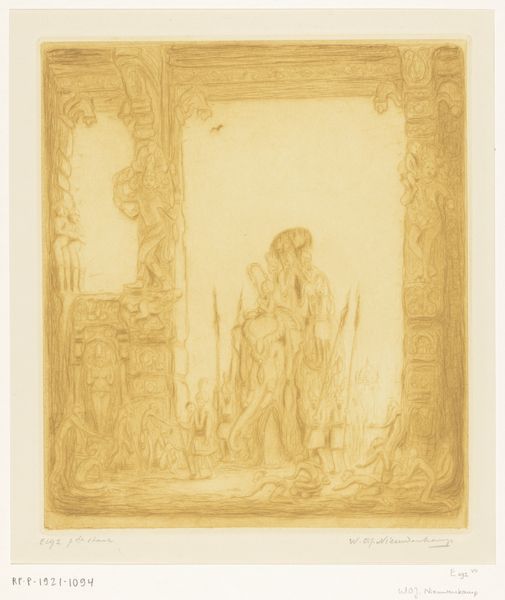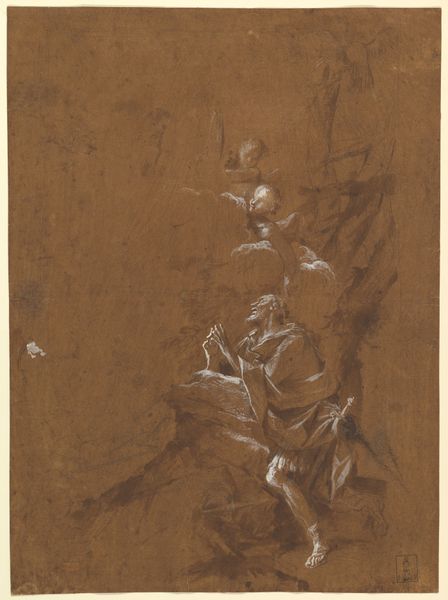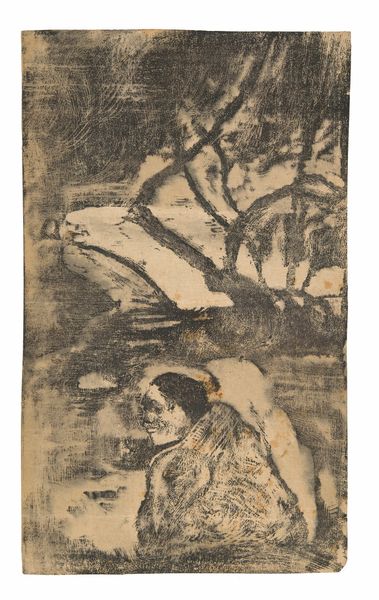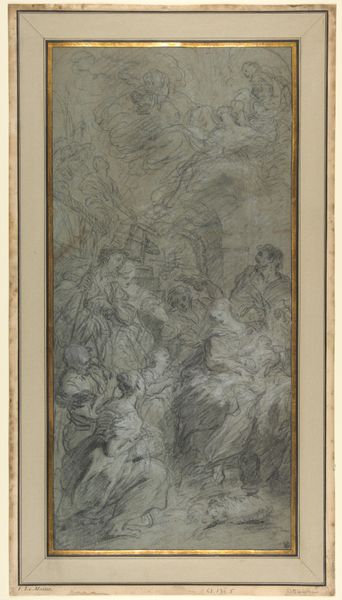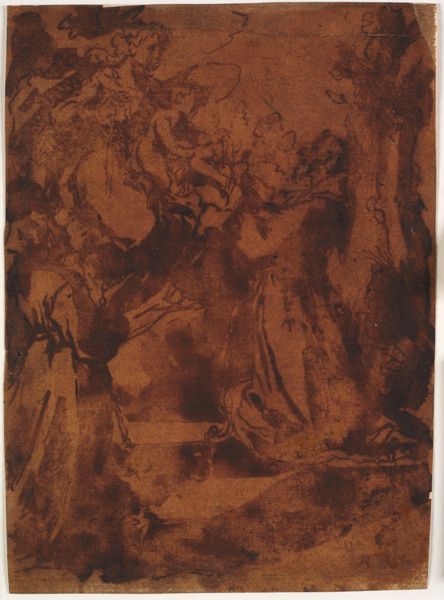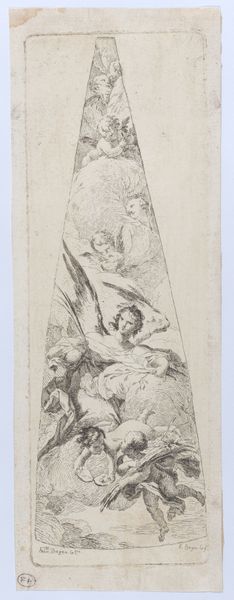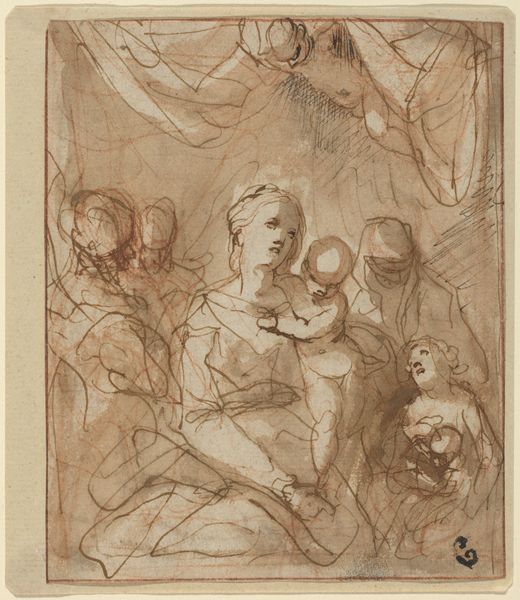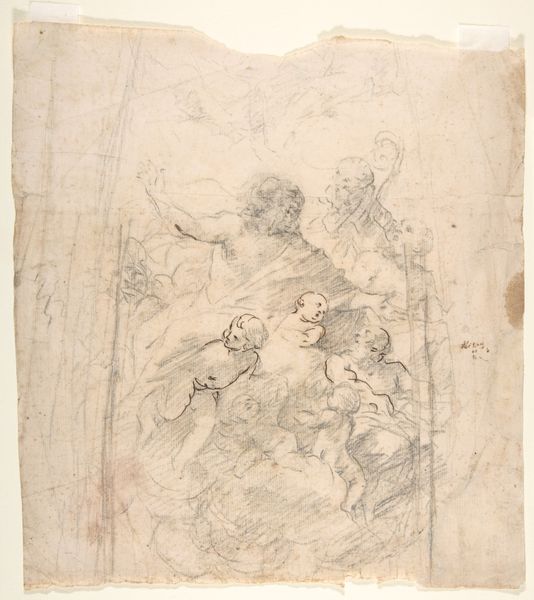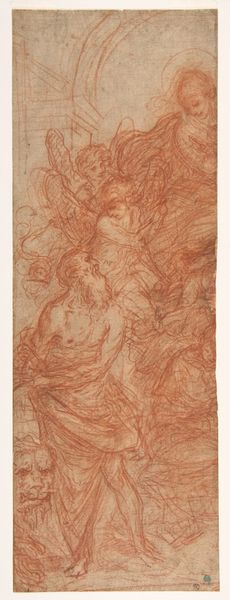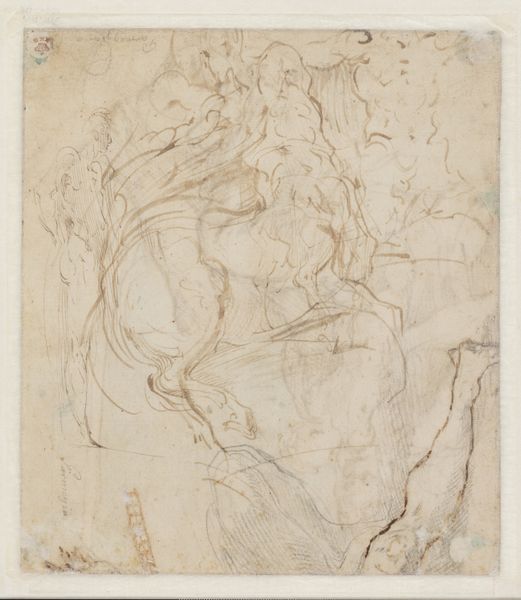
Studies for the Assumption of the Virgin 1657 - 1660
0:00
0:00
drawing, charcoal
#
drawing
#
baroque
#
charcoal drawing
#
figuration
#
charcoal
#
history-painting
#
italian-renaissance
Dimensions: 9-3/8 x 7 in. (23.8 x 17.8 cm)
Copyright: Public Domain
Curator: I'm immediately struck by the ephemeral quality of this work. The charcoal medium lends a lightness, almost as if these figures are ascending right before our eyes. Editor: Precisely! What we're observing is "Studies for the Assumption of the Virgin," a charcoal drawing completed by Juan Carreño de Miranda between 1657 and 1660. It's part of the collection at the Metropolitan Museum of Art. Curator: Assumption narratives have historically been powerful tools, politically charged visual strategies for constructing ideals around womanhood and piety in the Catholic church, aren’t they? How might Carreno de Miranda be positioning the Virgin Mary here? Editor: I see your point, and while historical context enriches our viewing, consider first the formal elements. The composition is a flurry of ascending figures, the loose rendering technique adds a dynamic quality that's visually stimulating, echoing the energy and drama of Baroque art. Curator: I would agree with that. However, given its function as a preparatory drawing, shouldn't we think about it as the precursor for constructing particular beliefs surrounding religious authority? In Baroque Spain, Marian imagery functioned beyond the purely aesthetic; it buttressed ideologies. The softness in rendering the feminine form certainly plays a role in the message being transmitted. Editor: Undeniably. The softness also heightens the emotional resonance. Look at how the charcoal, used with such sensitivity, creates gradations of light and shadow, contributing to a spiritual aura that pulls you into a realm of reverence and awe. Curator: Well, while the artist clearly had access to the techniques we now recognize as standard Baroque fare, let's also note that these studies, produced during the height of the Spanish Inquisition, functioned ideologically in subtle but specific ways for contemporary audiences. Editor: Ultimately, Carreño de Miranda's art allows viewers a chance to reflect on their belief, or lack thereof, in such authority. For me, it's the shimmering effect achieved by the charcoal itself that allows for these kinds of conversations to be opened up in the first place. Curator: I agree. Even the materiality speaks to those contradictions, where the softness hints at constructed and fragile ideas, while the drama of ascension pulls at something we all grapple with.
Comments
No comments
Be the first to comment and join the conversation on the ultimate creative platform.
